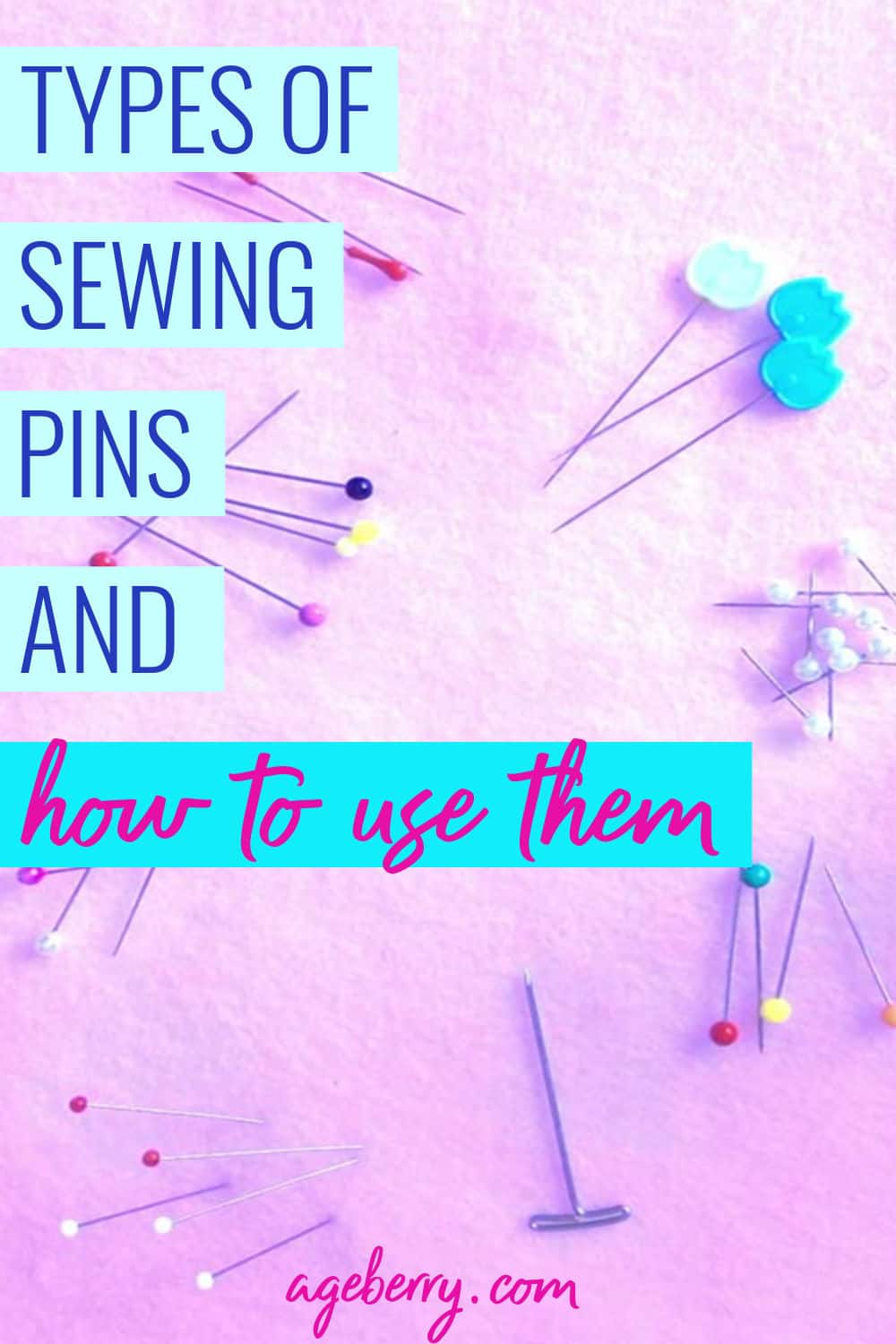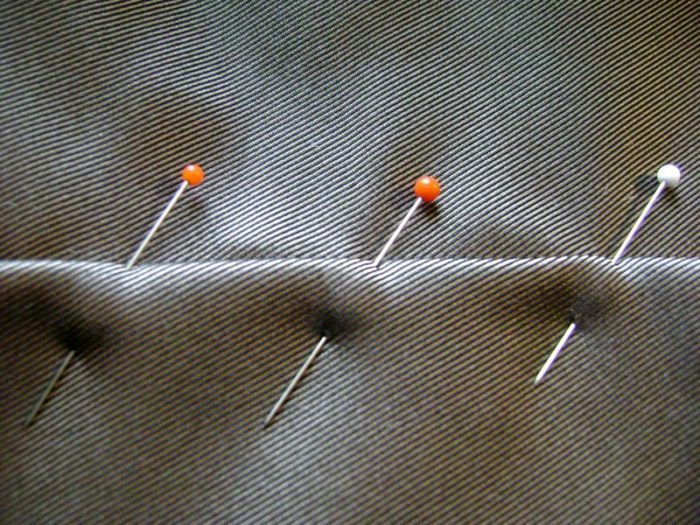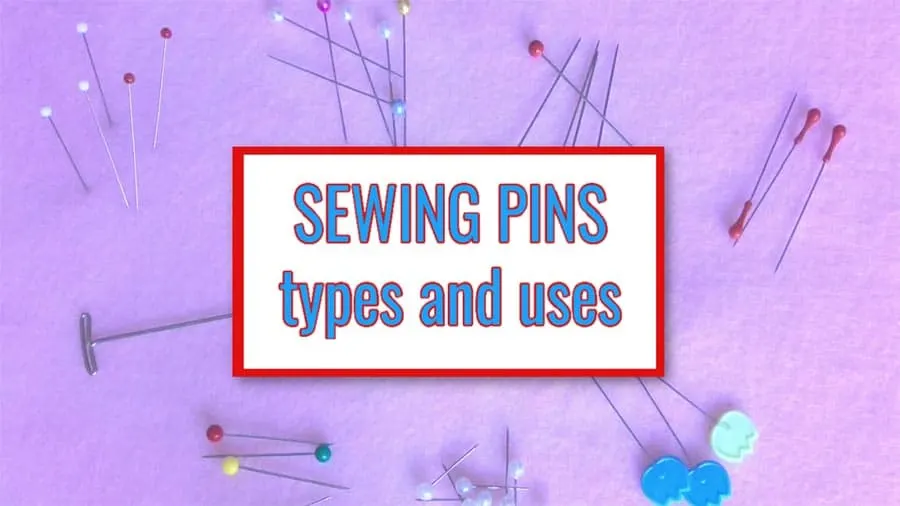Describe Three Uses for Pins in Sewing
In this video Ill talk about the different sewing pins the. Swipe it over your sewing table and watch it magically pick up any loose pins.

Types Of Sewing Pins And Their Uses All You Need To Know About Straight Pins For Sewing
Used to use a dish but I have an evil cat who loves to knock it over and laugh while I pick them all up.

. Examples of where pinning is commonly used are. Pin heads should be facing down. Sewing Pin Anatomy A sewing pin has a point a shaft and a head.
Glass or plastic straight head pins are the most common kind. There are three types of points to look for. Click below to go to their post.
Pins with softer metal shafts can be bendy making it that much harder to pin back up through fabric layers The 1⅜ length is the perfect size too. They are also sharper than the universal variety and feature a shaft that is slenderer and precise. Photo from Simple Simon Co.
Made out of nickel-plated steel theyre strong but not overly flexible. Pins are used. If you are working with knit fabrics or jersey then using ballpoint pins is a great.
These pins are usually used in. Simple Simon Co. How to Use Pins for Sewing.
Pinning a seam in place before sewing it. These pins are great for. Sharp needles true to their name are the sharpest type of sewing needle on this list and should be carefully handled.
Picking the right straight pins are just as important as picking the needle for your projects. A shaft connected to a head and ending in a sharp tip meant to pierce one or more pieces of soft materials. Fork Pins- Fine 158 long pins with a double pronged end.
If it causes holes or snags you should switch to another type of pin. Sewing clips dont leave holes in your fabric so they are perfect for fabrics like leather vinyl and cork where pinholes dont disappear. It also keeps the point of the pins clean and sharp because they are not exposed to dust and moisture.
Safety pins still a pin and useful if transporting sewing as wont fall out. By Simple Simon Co. Sewing pins are part of the basic sewing supplies.
The straight pin is of a soft strong metal construction as a point on one end and a head at the other which can be any from a co. Pin about 1-15 inside the fabric. When sewing with a serger place the pins outside of the seam allowance and align them parallel to the edge of the fabric.
Fabric being pinned into place. Just like sewing machine needles of the same name these pins have a rounded end so are ideal for. Fork pins have a 2-prong curve which is good for slippery fabrics like lining.
I use them to pull the elastic through casings. But there are different types of pins and the right one to use depends on your project and your material. Here are the main types of pin used.
2 How to use pins with a serger. T-Pins- A 134 long thick pin which pierces and holds heavier weight fabrics. Fiberfill cotton wool or other material that is flattened and usually on a roll and purchased in precut lengths or by the yard.
Which one should you use. Describes some common types of pins and when you should use them. Pins are mainly used in patchwork and quilting for holding fabrics together when piecing when doing needle-turn applique and for basting the quilt before quilting.
These teeny tiny pins are useful for pinning really small areas so as the names suggests they come in. The primary purpose of this type of needle is to carefully work on fine woven and fine fabrics. Pleating pins are strong and fine and as named useful for pinning pleats.
Pinning is used whenever you use sewing pins to hold things in place. These are one of the most widely used pins among sewers. This makes them perfect for binding and bag-making.
The clips easily hold multiple layers of fabric especially thicker fabrics. T-pin use for upholstering and heavy weight fabrics such as canvas. Up to 8 cash back 1.
Opt for glass head straight pins for everyday projects. The rest is pins. One spot on the edge is for hand sewing needles one spot is for three sizes of safety pins for turning tubes and pulling elastic.
Use ballpoint pins for knit and jersey fabrics. You can also use them in place of pins if you are working on a larger project you want. Sewing pins are used to hold pattern pieces in place anchor seam allowances as you sew fit fabric on the body and secure decorative trims.
This pin has two prongs which curve up at the end allowing. Which Pins Should I Use. Pinning an ornament pocket or other part in place before attaching it.
A shaft of a rigid inflexible material meant to be inserted in a slot groove or hole as with pivots hinges and jigs. As you stitch the pins will be to the left of the needles and knife. Of course you dont need to remove them because they are safely out of the way of the blade.
Uses of batting range from filling for placemats or vests to quilts. Temporary stitching used to hold a sewing project in place and is removed when the permanent sewing is done. Pins are used to fasten a pocket a sleeve collar etc in place on the main garment whilst being sewn with a needle and thread or on a sewing-machine.
They will hold the fabric stable and you and your machine will be safe from accidents. It is a very helpful tool. The point of your pin should slide easily and cleanly into your fabric.
A pin is a device used for fastening objects or material together and can have three sorts of body. This will prevent you from being stabbed as well as making it easier for you to remove them while serging.

A Pin For Every Sewing Purpose

Types Of Sewing Pins And Their Uses All You Need To Know About Straight Pins For Sewing Sewing Crafts Tutorials Sewing Sewing Bias Tape

Types Of Sewing Pins And Their Uses All You Need To Know About Straight Pins For Sewing
No comments for "Describe Three Uses for Pins in Sewing"
Post a Comment